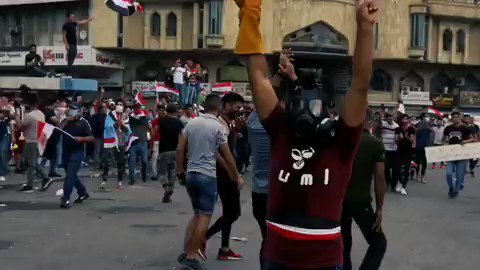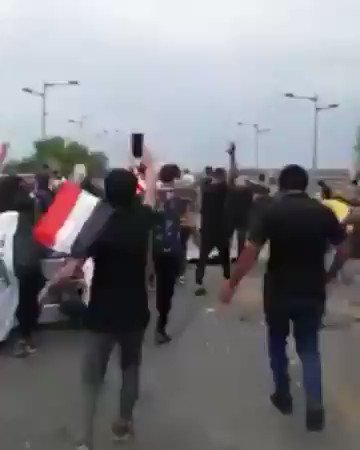Iran’s Azarab Factory Workers Fall Victim to Regime CorruptionIran’s Azarab Factory Workers Fall Victim to Regime Corruption
Workers of Azarab Factory in Arak province started their new series of the strike on October 6, protesting their overdue wages, the disorder in the factory’s management and its privatization.
Azarab factory and its workers are victims of the Iranian regime’s long-institutionalized corruption and are now in an unbearable situation; therefore, they have started their protests and strikes once again.
The first series of protests started in early 2017. Azarab workers, who had not been paid for three months, rallied and marched for their dues. These protests continued until June 2017 and started again in July 2017. Workers demanded five months of outstanding wages, yet no one answered their demand.
The next round of workers’ protests started in October 2017. Iran’s regime arrested the company’s managing director to silence the workers.
#IRAN: Azarab Workers Continue Protest, Block National Railway Suppressive Forces Fire Teargas ncr-iran.org/en/ncri-statem…#IranProtests #FreeIran #HumanRights
The question is, why has a huge factory, which is responsible for supporting the country’s industry, suddenly fallen in such a predicament whereby it is incapable of paying its workers’ wages?
Hassan Rouhani's predecessor, Mahmoud Ahmadinejad, handed the Azarab factory over to the private sector in 2006. The factory had vast cooperation with domestic and international companies until 2013 and supported a major part of industrial projects inside Iran. But starting 2013, under Rouhani’s government, the majority of Azarab Factory’s projects were canceled.
One of the manufacturing directors of this factory has said: “When this (Rouhani) government came to power, domestic industries, including Azarab, were kicked out of power plant projects in Assalouye ... under the pretext of insufficient competence, and the government turned to foreign companies.”
So, Rouhani’s government delivered a coup de grace to the Azarab factory with the excuse of “absence of credit and sufficient competence” and signed contracts with foreign companies. This resulted in early retirement or firing of 1500 employees of this factory and the reduction of some of the factory’s manufacturing statistics to as low as 10 percent. Does Rouhani not know that a government’s main duty is supporting domestic industries against the foreign industries?
In this case, why has he canceled domestic contracts and signed contracts with foreign countries? What sort of conspiracies lay behind these actions?
A look at Azarab’s position and the role that this super-factory has in supporting Iran’s main industries offers insight into the depth of the crisis.
Azarab Industries is an Iranian holding super-factory involved in the construction of industrial infrastructure, oil and gas refineries, petrochemical compounds, dams, cement factories, hydroelectricity, gas, thermal and nuclear power stations and manufacturing their equipment.
Azarab factory is adjacent to the Arak automobile factory, and prior to the 1979 revolution in Iran, it was a part of the Arak automobile factory expansion plan. In 1982 it was exploited as an independent factory.
This factory has a dimension of 37 acres; the dimension of the infrastructure of its main workshops are above 70000 square meters, and its roofed workshops have 110000 square meters.
This factory cooperates with factories such as IHI, GKK, JSW in the field of designing and manufacturing steam boilers, preheaters, towers, reactors, pressure vessels, and other vessels. Azarab also cooperates with Foster Wheeler (FW) for designing and engineering steam boilers with combined-cycle and Voith Group for designing and engineering Francis water turbines.
Azarab factory is known as one of the biggest general contractors in Iran and even the Middle East. It has completed many projects including Qom’s combined-cycle power station, Arak Shazand’s power station, Isfahan refinery’s oil section, Kangan gas refinery and Arak’s petrochemical compound refinery.
This factory has a significant and key role in expanding Iran’s industry, yet it is now on the verge of absolute bankruptcy in the regime’s corrupt system.
The Iranian regime resorts to suppression against any kind of protests or strike, especially those by workers, in fear of the spread of protests; thus, the regime’s security forces attack workers on strike and arrest those who participate in workers’ protests.
The Iranian Resistance has condemned the reaction of the religious fascism to protests by workers, who only demand their basic rights. It declared that workers’ persistence will overcome this cruelty.
In September 2019, around 284 protests were recorded in 71 Iranian cities and industrial districts of 28 provinces, which is an increase in comparison to the previous month.
Most of these protests, especially workers’ protests over overdue wages, have continued for months on end.







